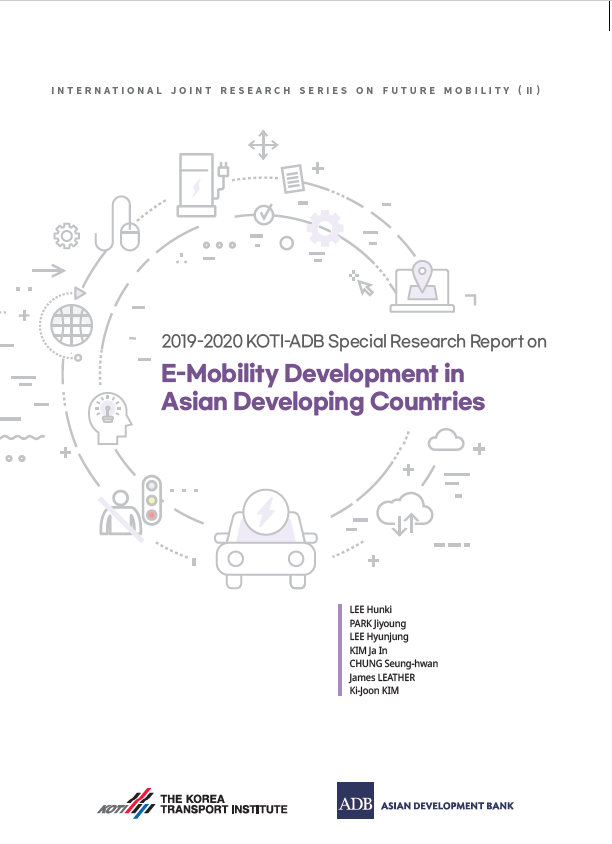Etc Report

RESEARCH
KOTI - Korea Transport institute- Date
September30 2020
- Page(s)
199 page(s)

With advancements in the transportation technology sector, the number ofelectric cars is rapidly growing worldwide. Over three million electric cars areregistered and operating as of 2017, a more than ten-fold increase since 2013(IEA2018). Acknowledging such changes, international organizations such as theWorld Bank (WB) and the Asian Development Bank (ADB) are conducting policystudies to launch Official Development Assistance (ODA) projects, with a strongemphasis on e-mobility.
ADB, for instance, executed its phase 1 e-mobility policystudy in 2018, and is now in the process of executing phase 2. Phase 1 looks atcountries where the effect of implementation is expected to be higher, based on ananalysis of the initial impacts of e-mobility policy implementation in ADB memberstates.
Based on the subsequent findings, Phase 2 selects twenty pilot cities, andreviews the effect of and implementation strategies for e-mobility policies at thelevel of individual cities. Under these circumstances, KOTI and ADB are conducting a collaborative studyto diversify assistance projects for the Asian region and ensure the efficientimplementation of e-mobility projects.
ADB will collect information about the citiesin select Asian countries and establish e-mobility strategies, while KOTI willdevelop a readiness index to tease out the feasibility of e-mobility policies andexplore the impact, variables, and implications of the policies by applying emobility toolkit analysis models. The findings are expected to support the adoptionof e-mobility policies in Asia’s developing countries, discover new e-mobilityassistance projects that reflect current trends in transportation technology, andsubsequently contribute to the realization of sustainable transportation systems inAsia’s developing countries.